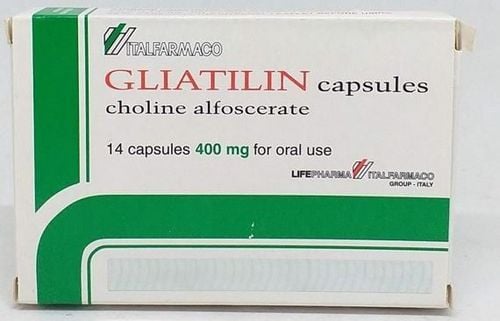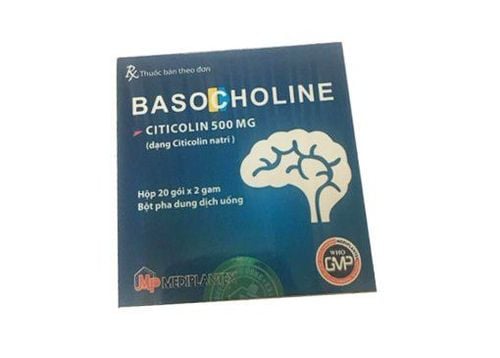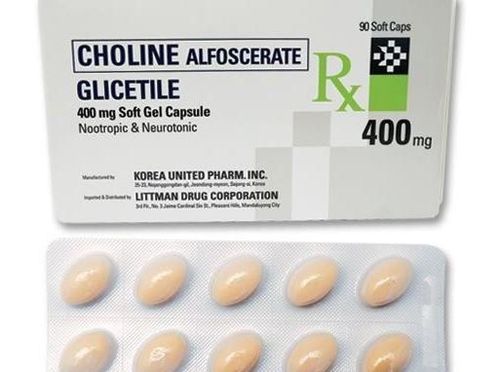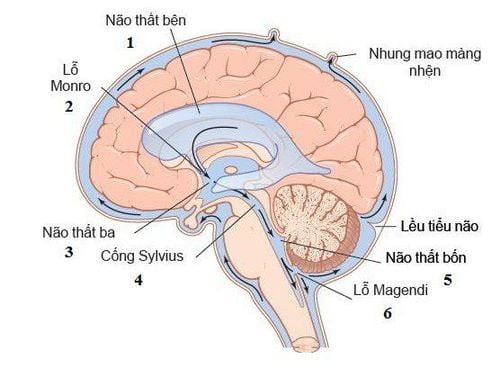This is an automatically translated article.
The article is professionally consulted by Master, Doctor Bui Tien Dat - Emergency Medicine - Cardiology - Emergency Resuscitation Department - Vinmec Hai Phong International General Hospital.Traumatic brain injury is an extremely dangerous and complicated disease with many different levels, in which severe traumatic brain injury is the most dangerous injury. Therefore, the detection, initial emergency treatment and prompt and timely treatment of severe traumatic brain injury are very important in limiting later complications and reducing the mortality rate for this patient. core.
1. What is a traumatic brain injury?
Traumatic brain injury is defined as a blow to the head or trauma that penetrates the skull that disrupts the normal function of the brain. Traumatic brain injury can occur when the head is hit suddenly and sharply with an object, or when an object penetrates the skull and enters brain tissue.
Symptoms of traumatic brain injury can be mild, moderate or severe, depending on the extent of brain damage. Mild cases may cause little change in mental status or consciousness. While severe cases can cause prolonged loss of consciousness, coma, or even death.
The main cause of traumatic brain injury is traffic accidents, falls, work accidents, careless accidents or sports...
2. Symptoms of severe traumatic brain injury
Symptoms of a traumatic brain injury may appear soon after a major blow to the head, or may appear days or weeks later. Symptoms of severe traumatic brain injury include:
Physical symptoms Loss of consciousness minutes to hours Persistent headache or worsening headache Repeated vomiting or nausea Convulsions or spasms Dilation of one or both eyes Clear liquid draining from the nose or ears Inability to wake from sleep Weakness or numbness in fingers and toes Inability to coordinate activities Cognitive symptoms or Mentally Deep confusion Agitation, fighting, or other unusual behavior Stuttering Coma and other disturbances of consciousness

3. How to handle a victim of traumatic brain injury
Initial treatment for patients with traumatic brain injury is very important, giving the patient a chance to escape death and reducing potentially dangerous complications for the patient. What to do when seeing a victim with a traumatic brain injury are:
Quickly remove the patient from the dangerous place, paying attention to keep the cervical spine and back from bending when moving. Immobilize the patient on a firm stretcher, lying supine, head tilted to one side. Note, do not transport the patient while in a state of breathing failure, bleeding, low blood pressure... If the patient's condition is severe and needs to be transported, the patient must be resuscitated at a nearest medical facility, then call for emergency support and resuscitate and transport. Open the airways: hook the sand, wipe away the sputum in the patient's mouth; Can sew or use a needle to fix the tongue when in patients at risk of tongue drop or emergency tracheostomy when indicated. It is necessary to stop bleeding wounds that are bleeding, bandage the wounds, fix broken bones..., to avoid blood loss and infection. Check whether the patient has respiratory failure or not? If no longer breathing, need to receive respiratory support: balloon compression through the mask, endotracheal intubation, endotracheal balloon compression (if possible). Check if the patient has low blood pressure or not? An infusion line is required for rehydration and medication as needed.
4. Treatment of traumatic brain injury
Treatment of traumatic brain injury achieves two important goals:
Correction of intracranial pressure (ICP = IntraCranial Pressure ) Correction of cerebral perfusion pressure (CPP = Cerebral Perfusion Pressure) Treatment of severe traumatic brain injury often associated with increased intracranial pressure, a potentially fatal risk. Thus, many methods must be applied to make the cerebellum and cerebellum soft, that is, to bring the intracranial pressure back to normal limits.
The most effective method is to remove the intracranial hematoma or drain the CSF or widen the skull to decompress. It is important to maintain intracranial pressure below 15 mmHg (Marshall, 1980); According to Miller, 1981, the mortality rate is high when the intracranial pressure exceeds 20 mmHg.
It is important to balance intracranial pressure and ensure cerebral perfusion pressure is always > 70mmHg as well as combine with many other methods to protect the brain. Golden time is an urgent criterion not only to save the life of people with traumatic brain injury but also to improve the quality of life.
Medical treatment
Reduce intracranial pressure Keep cerebral perfusion parameters normal > 70 mmHg Induce sleep with Barbiturate or Propofol Hypertonic solution: Mannitol 20% Hypothermia therapy Increase ventilation Keep blood pressure stable Surgical treatment
Expansion of the skull and decompression Removal of intracranial hematoma, if indicated, Drainage of cerebrospinal fluid, Cleaning of traumatic brain injuries, Open or closed skull subsidence surgery

5. Some measures to reduce pressure in the skull
Surgical removal of intracranial hematoma Intracranial hematoma is a cause of increased intracranial pressure, if surgical removal of hematoma will bring the best effect, reducing intracranial pressure . Hematoma usually occurs immediately after traumatic brain injury and will be treated as soon as it is curable, about 10% of intracranial hematomas appear slowly.
Drainage of cerebrospinal fluid Inserting a soft silicone drain into the ventricles to reduce intracranial pressure is a highly effective measure immediately afterwards. The drain will be opened every 4 hours to keep the intracranial pressure <20mmHg
Cranial expansion decompresses the skull expansion decompresses the frontal lobes bilaterally or temporomandibular-attached to one or both sides depending on the lesion has been endorsed and applied by many authors as a measure to reduce intracranial pressure in cases of severe traumatic brain injury, causing increased intracranial pressure unresponsive to medical treatment alone. This measure reduces intracranial pressure quickly and effectively immediately after decompression
Osmotherapy with mannitol and hypertonic saline is only used in cases of hypertension Severe intracranial force with stable hemodynamic conditions and normal body water composition with plasma osmolality < 320 mOsmol. In fact, there is no evidence that hypertonic solution therapy improves outcomes or is more effective in intracellular edema than extracellular edema
Barbiturate sedation Barbiturates decrease cerebral metabolism and decrease In fact, there are no clinical trials that fully and unequivocally demonstrate the benefit of barbiturates. Barbiturates can cause hypotension and decreased cerebral circulation, potentially causing more severe secondary damage in patients with reduced cerebral blood flow. Prolonged use of barbiturates results in delayed awakening and potential for nosocomial infections
Hyperventilation Routine and prolonged use of hyperventilation in head trauma patients causes worse outcomes than patients with normal blood CO2. This is probably due to decreased cerebral blood flow leading to secondary cerebral ischemia. The use of hyperventilation should be based on the principle of treatment and should not be routine hyperventilation.
Hypothermia For many years hypothermia has been used to reduce brain metabolism and thereby also reduce intracranial pressure. This measure always keeps the temperature at 30 - 33 degrees Celsius accompanied by prolonged ventilation and is easy to cause hospital infections. This measure is currently considered an unimportant measure for severe cases of increased intracranial pressure and is not commonly applied.
Steroids There is no evidence that steroids are effective in reducing intracranial pressure, sometimes increasing the risk of infection. The current general trend is that steroids should not be used in traumatic brain injury.

Severe traumatic brain injury is a serious illness. Therefore, first aid, treatment and resuscitation need to be carried out by qualified medical facilities with a team of trained doctors. The treatment of traumatic brain injury requires comprehensive, patient follow-up and serious technical implementation to have the opportunity to save the patient's life and minimize the sequelae of traumatic brain injury. after that.
Master. Doctor. Bui Tien Dat received intensive training in the field of cardiology and cardiovascular emergency resuscitation at Hanoi Medical University and Bach Mai Hospital. The doctor has more than 12 years of experience in the field of emergency and cardiovascular resuscitation and is currently a doctor at the Emergency Department of Vinmec Hai Phong International General Hospital.
If you notice any unusual health problems, you should visit and consult with a specialist.
In April & May 2021, when there is a need for examination and treatment of Traumatic Brain Injury at Vinmec Phu Quoc International Hospital, customers will enjoy double incentives:
- Free specialist examination and Received the Rehabilitation Package
- Reduce 50% of the cost for customers with a prescription for post-examination treatment. The program is limited to the corresponding technique of each hospital and to customers who perform this treatment technique for the first time at Vinmec.
Please dial HOTLINE for more information or register for an appointment HERE. Download MyVinmec app to make appointments faster and to manage your bookings easily.














